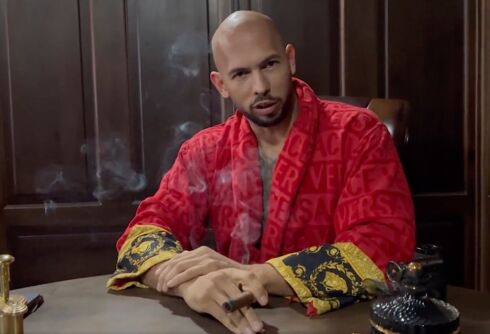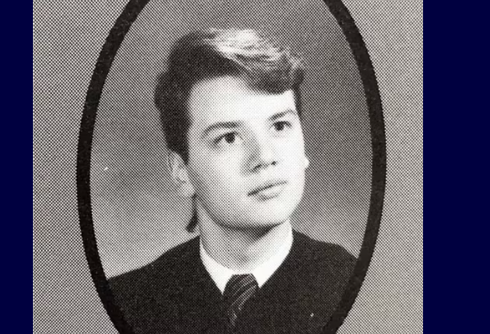As travel writers, we spend a fair bit of time on Instagram.
We post pictures and tell “stories” about our lives as digital nomads — and now about our life here in Puerto Vallarta, Mexico, where we’re social distancing until we can get the COVID-19 vaccine and continue our travels.
Related: It takes a special kind of parent to raise a gay son during a pandemic
Over the holidays, there was some pretty negative news from down here about LGBTQ Americans, especially the “Instagays,” who came here specifically to party despite the fact that we’re in the middle of the COVID-19 pandemic.
Never Miss a Beat
Subscribe to our newsletter to stay ahead of the latest LGBTQ+ political news and insights.
Promoter Jeffrey Sanker specifically — and outrageously — moved his White Party to a secret location to avoid local restrictions put in place to deal with COVID-19.
And there was a lot of schadenfreude on the internet when a party boat filled with gay guys sank on New Year’s Eve — especially when we learned the boat had been launched to circumvent crowd limitations in the gay bars.
An Instagram account, @GaysOverCovid, was created specifically to shame and dox irresponsible men who continue to party through the pandemic.
We both have big issues with a lot of this, including shaming, that we think speaks to some real problems with social media in general.
But now that these Puerto Vallarta-specific issues are finally fading out of the spotlight, we can’t help wondering: Is Instagram a good or a bad thing for our community?
One on hand, Instagram celebrates male beauty — specifically, gay male beauty — in a way that’s never quite been celebrated before. And many of these accounts also champion fitness, and nutrition, and travel, and work-life balance in ways that are undeniably good.
But Instagram also has a way of making you feel bad about yourself as a gay or bisexual man. Naturally, the most popular accounts are the most handsome, most fit men — usually white man — often posed in Speedos in fabulous locations around the world.
This is presented as “aspirational,” but the fact is, even the actual men in these photos don’t always look like that. They’re posed and photoshopped and filtered, and their “lifestyles of the rich and famous” are often rented by the hour.
Even without filters, most of us don’t have six-packs, or perfectly sculpted arms and chests. Some of us are less conventionally attractive or less traditionally masculine. Or older. Or we don’t have 5% body fat. Or we’re something other than white.
As a result, when it comes to self-esteem and body issues, Instagram can be a really bad place to spend time.
But no matter who you are or what you look like, Instagram doesn’t have to leave you feeling defective.
In fact, in many ways, Instagram reminds us of the parable of the three blindfolded men each touching a different part of an elephant.
The man touching the trunk thinks the elephant is some kind of snake. The man touching the leg thinks it’s a giant tree stump. And the man touching the tusk thinks it’s a weapon.
By only experiencing one single part each, none quite understands the “whole” elephant.
So if you come to Instagram, and the only part of it that you “touch” are the tags for #speedoboy or #hotbeard, or only follow accounts featuring muscle strapped hunks or Instagays, then you might end up thinking most gay men look like the people in those pictures.
And that maybe you should look like that too. And if you don’t, you should feel bad about yourself.
But please remember: you’re only touching part of the Instagram elephant.
Yes, most of us like looking at profiles with fit, handsome men (or beautiful women, or lovely non-binary people). But there are plenty of other tags too, ones like #gayhikers, #gaydogdads, and #gaynature that are filled with beautiful pictures of mountains and rivers, guys cuddling their dogs, and gay and bisexual men who love spending their time outdoors.
There are awesome feeds like @LGBTQoutdoors celebrating queer folks who love to hike and climb mountains and kayak rivers. @Gay_maps posts pictures of gay couples from all over the world — most of whom don’t look like they just stepped out of a circuit party (or a gym and tanning salon).
If you follow personal accounts like @dorianhollidayfigure you’ll learn about the life of a portrait model who not only celebrates body positivity but speaks eloquently to important issues about race in America.
Or @alwaysanovice, a nurse in the UK who celebrates being fit in a healthy way and talks about mental health issues many people struggle with.
Or @2traveldads, documenting their lives raising two boys in Florida.
And while we’re at it, why only follow gay or bi men?
How about @noelandelyse, lesbian moms in Minnesota who share pics of their day to life?
In fact, there are tons of accounts documenting the lives of LGBTQ families.
And one of Michael’s personal favorite hashtag is the one for Yellowstone National Park, #yellowstonenationalpark. It reminds him that there is still so much beauty in the world — that, even now, the world is more than just the latest, terrible news out of Washington, D.C.
So is Instagram good or bad for the LGBTQ community?
Honestly, that depends on you, on whether or not you’re making a point to touch the whole elephant. If you’re only touching the section that makes you feel bad about yourself, well, that’s partly on you. So make a point to touch a different part.
Follow different people and explore different tags.
As long as we’ve been alive, we’ve heard that the strength and beauty of the LGBTQ community is its diversity. Hell, our flag is a frickin’ rainbow!
But the truth is, our diversity really is our community’s strength and beauty. And you’re a damn fool if you don’t explore it for yourself, on Instagram, and everywhere else.
Brent Hartinger‘s latest book, Project Pay Day, is available for preorder, and Michael Jensen is the former editor of AfterElton.com. Visit them at BrentAndMichaelAreGoingPlaces.com, or on Instagram or Twitter.














